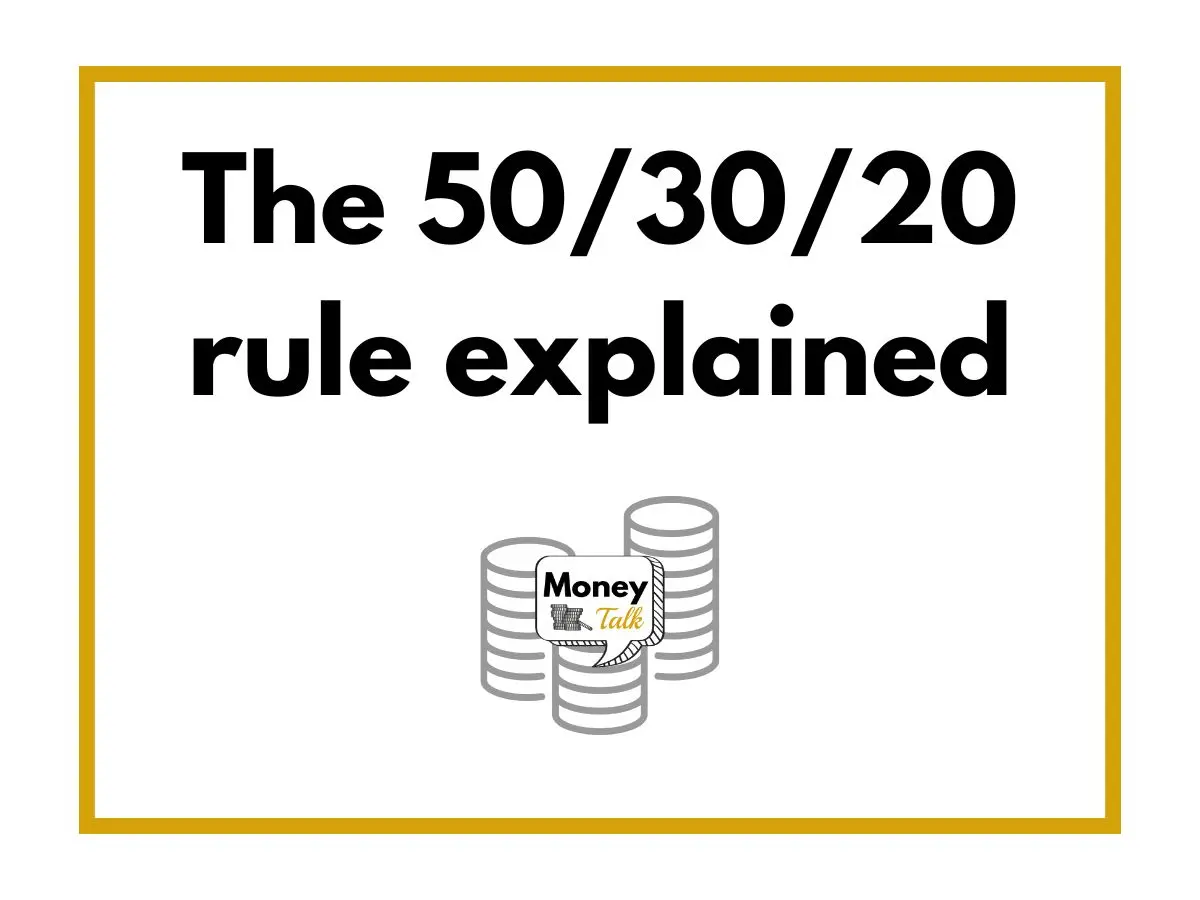How the 50/30/20 rule can help with money management
Money Talk is intended to inform and educate; it's not financial advice. Affiliate links, including from Amazon, are used to help fund the site. If you make a purchase via a link marked with an *, Money Talk might receive a commission at no cost to you. Find out more here.
Managing money is hard, and there are all sorts of reasons why.
There’s the lack of financial literacy, the anxiety that comes with thinking about money, and the lack of security when you’re self employed or on low income.
I could go on.
But for those who struggle with managing their money, there is a simple rule that could help: the 50/30/20 rule.
What is the 50/30/20 rule?
The 50/30/20 rule was coined by US Senator Elizabeth Warren in her 2005 book All Your Worth: The Ultimate Lifetime Money Plan*, and its popularity comes from its simplicity.
All you need to do is split your after-tax income into three pots – needs, wants and savings/debts – on a ratio of 50:30:20.
So 50% of your money should go on needs, 30% on wants and 20% on savings or debts.
The rule is designed for balance as it covers your essentials, and helps you build your financial future while still leaving room for fun.
It can also be great for managing lifestyle creep – instead of spending more when your income goes up, you’re committing to saving more as well.
How the 50/30/20 rule works in practice
Before you do anything else, you need to work out your net income. That is, your income after tax, national insurance contributions and any auto-enrolment pension payments.
If you’re on a salary that’s obviously pretty straightforward – just look at the take home pay on your last pay slip.
You should ignore any commissions or bonuses though, unless these are consistent.
If you’re self employed or have fluctuating income then it’s a bit more tricky, but an average of the last six to 12 months (or even longer) should give you a good indicator.
Next, you need to look at your expenses and categorise them into needs, wants and savings/debts.
If your spending fluctuates a lot, it’s worth taking an average of a six or 12 month period here as well.
Twelve months is more onerous, but it’s also more accurate as it takes into account seasonal events like birthdays.
To work out your current percentages, you just need to divide the monthly amount for each category by your take home pay and then multiply it by 100.
Knowing your current percentages gives you an idea of where you could make adjustments.
If your needs spending is currently over 50% of your expenses then you’ll need to reduce spending elsewhere to stop yourself getting into debt, for example.
Or if your spending on wants is over 30%, and you want to save money, then you’ll need to look at how you can reduce your expenses.
Read this: How to manage spending and save money
What goes into each pot?
It’s up to you what you put into each pot.
Savings and debt repayment is obviously pretty straightforward but even here you could expand into different pots.
For example, you might have a savings pot for your emergency fund, a house deposit and additional pension contribution (anything over and above auto-enrolment).
Needs will typically cover rent/mortgage payments, council tax, utility bills like gas, electricity and water, and groceries like basic food and household supplies.
For some, the needs section might also include travel costs like public transport, fuel and parking, as well as any legally-required insurance, for example for your car or home.
Mobile phone and broadband costs could also go here, although some would argue that these are more wants than needs.
All of your other expenses would fall into wants.
So things like your clothes, going out to eat, subscriptions to Netflix or Disney+, gym memberships and fitness classes, and any hobbies or leisure activities.
Wants would also encompass anything that would be considered an upgrade from the basics.
Shopping for food at M&S rather than Lidl, for example.
Is the 50/30/20 rule realistic for the UK?
Given the 50/30/20 rule was designed for the US, you may well be wondering how well it works in the UK.
The answer is that it depends on your situation – where you live and how much money you earn can easily upset the balance.
For example, if you live in London or another major city, expenses in your needs category can easily exceed 50% of your budget because of rent or mortgage costs.
While there’s generally a London weighting for annual salaries, this might not be the case if your wages are based on casual employment.
In this case, you would adjust the ratios to suit your needs. So your rule might be 60/20/20, 70/20/10, or some variation of that.
The key is flexibility, as the rule is meant to be a guide to help you manage money rather than being impossible to follow.
Alternatives to the 50/30/20 rule
As I say, the key to the 50/30/20 rule is flexibility – you need to be able to make adjustments to suit your lifestyle.
But there are also alternatives to the 50/30/20 rule that might work better.
The 80/20 rule
If you don’t need to scrutinise every pound spent but you do want to save, then the 80/20 rule might work better.
Instead of three categories you have just two: 80% on expenses and 20% on savings.
It doesn’t distinguish between needs and wants so you can spend flexibly, but you’ll still build up your savings pot
To make it work properly though you may want to “pay yourself first” (see reverse budgeting).
The 70/20/10 rule
If you’re keen to give money to charity consistently then the 70/20/10 rule might come in handy.
Instead of needs, wants and savings/debt, your three categories are 70% on living expenses, 20% on saving, and 10% on charitable giving.
As with the 50/30/20 rule, you can adjust the percentages to suit you.
Reverse budgeting
Unlike traditional budgeting, which is based on your essentials, reverse budgeting prioritises how much you want to save.
The idea is that you put away a set amount of money or a percentage of your income and then plan the rest of your spending around what’s left.
It’s best for those who are trying to pay down a debt, or someone seriously motivated to save money.
Don’t forget to review
If you’re serious about money management, you need to review your progress so you can see whether or not you’re following the targets you’ve set for yourself and where you could improve.
It’s worth doing this in the first three months, six months and then once a year after that as you get into a routine.
It’s also worth revisiting if your circumstances have changed, whether that’s because you got a new job or a new baby.
Pin this for later







